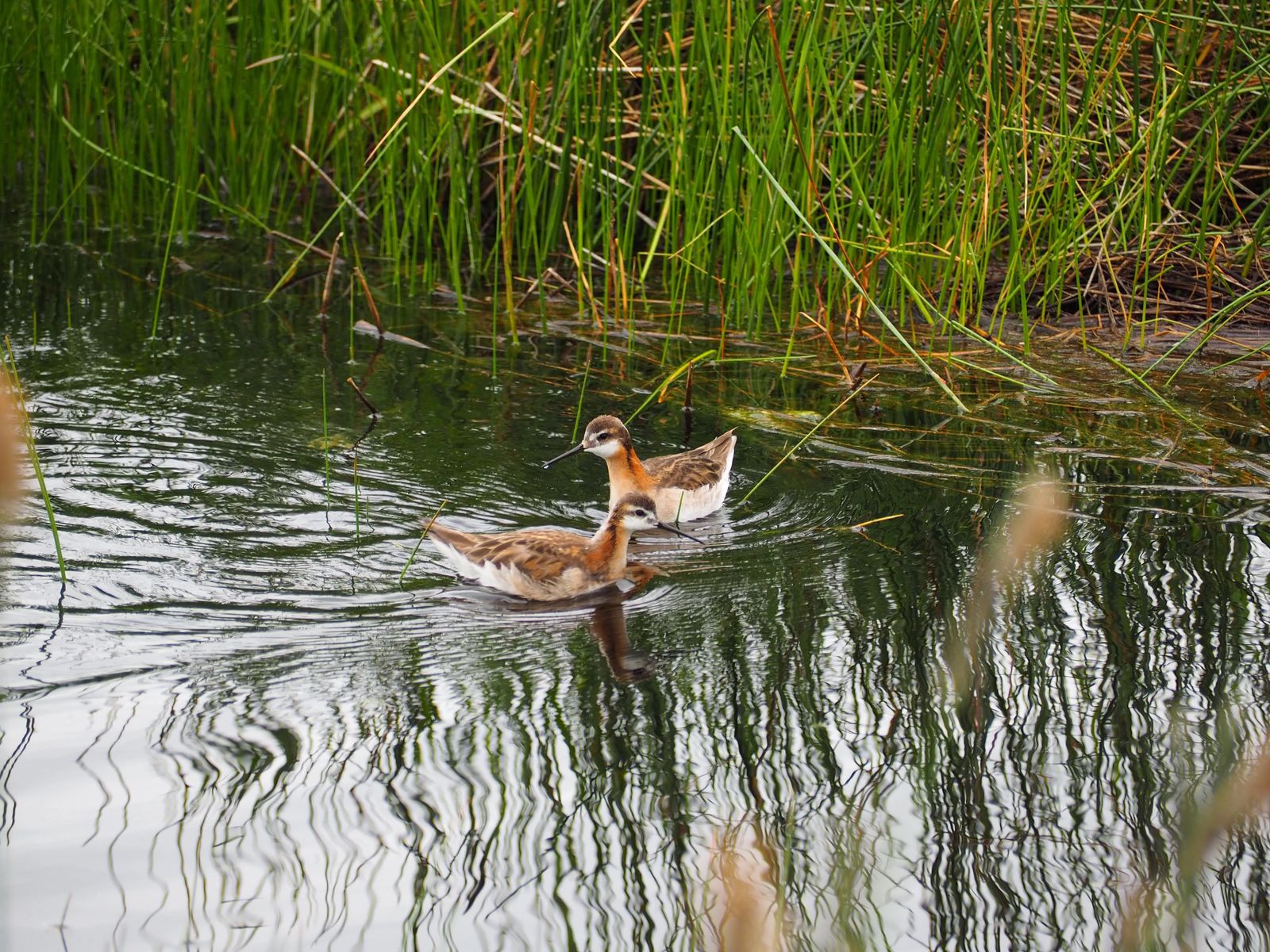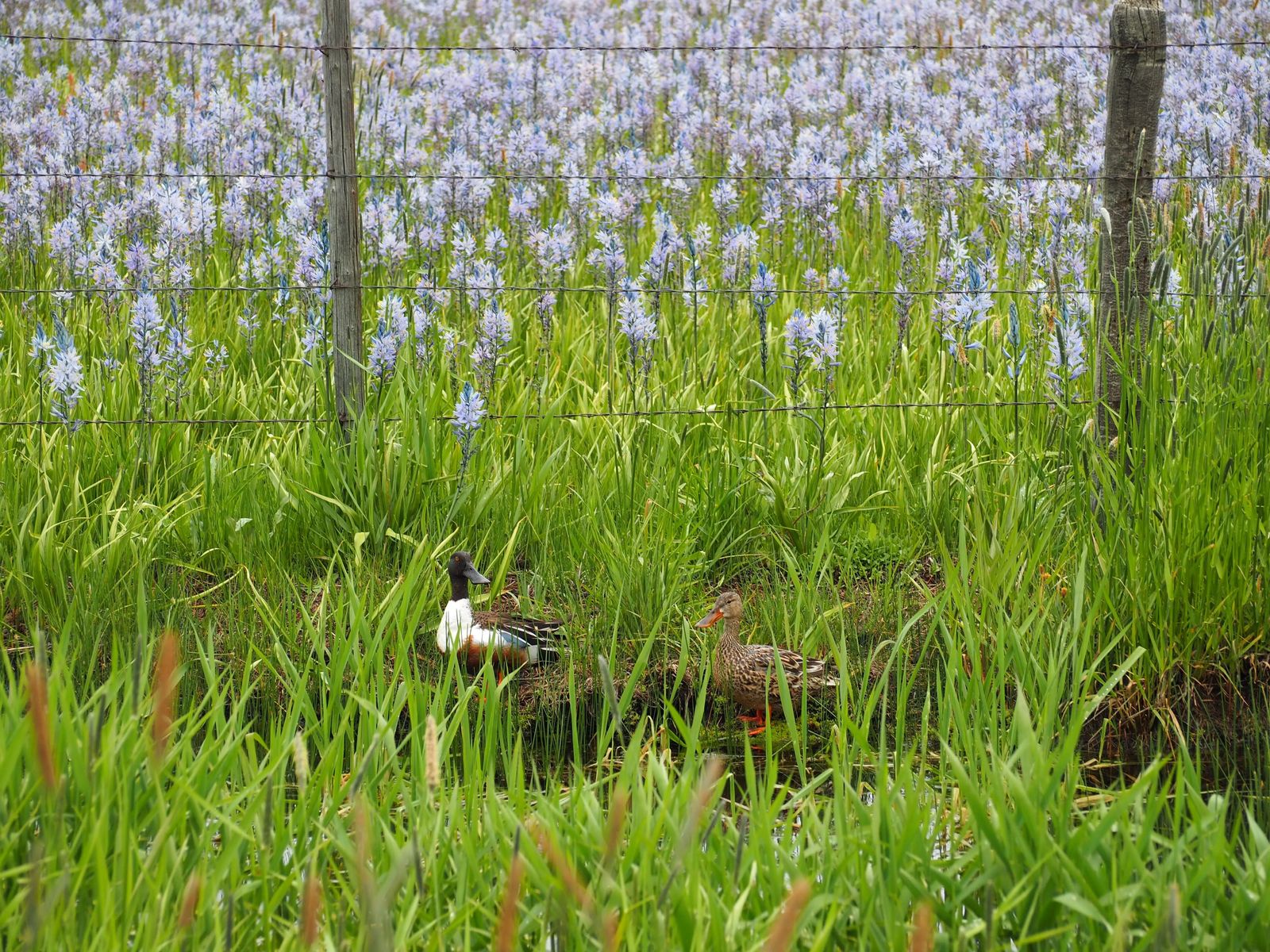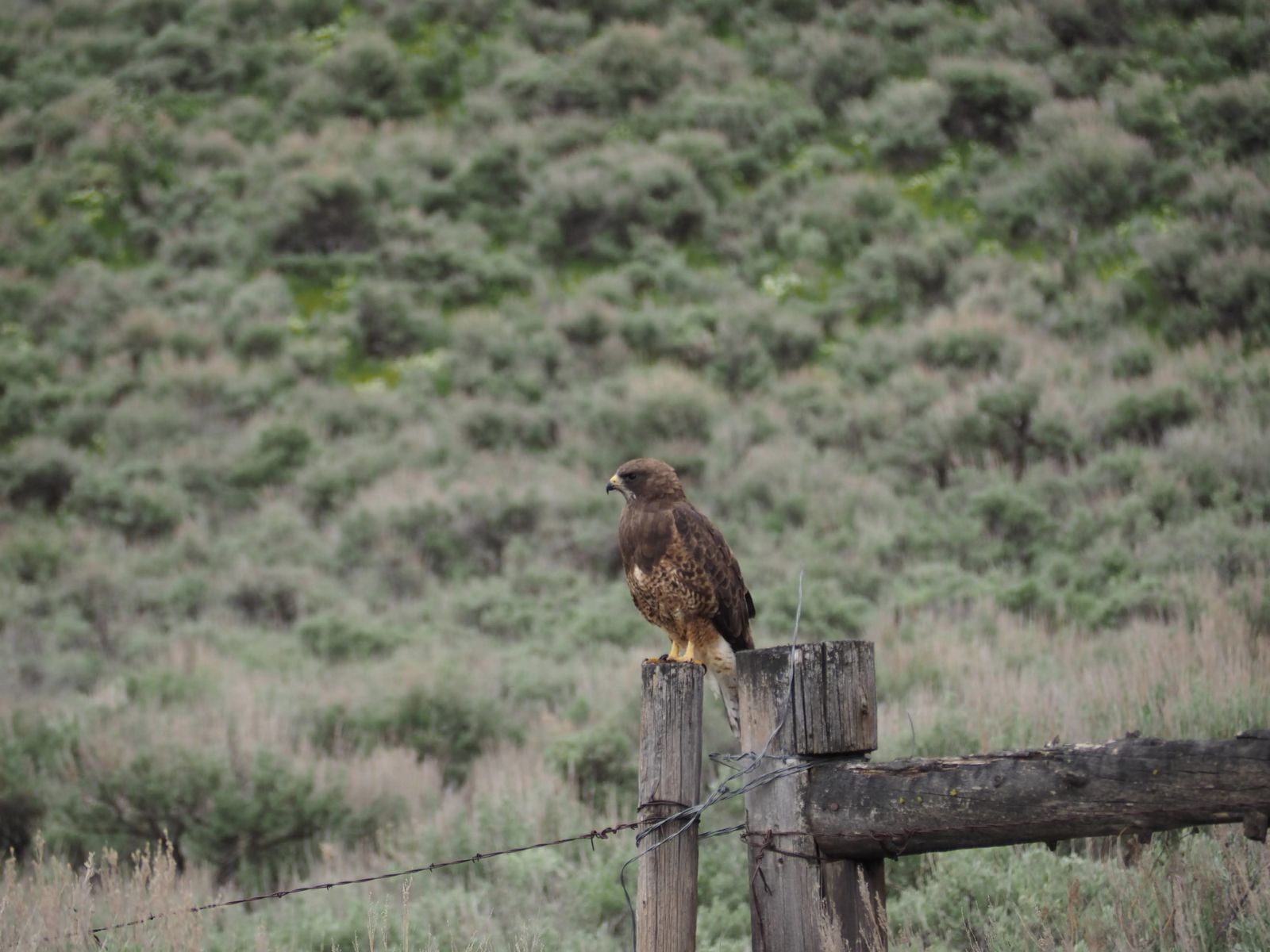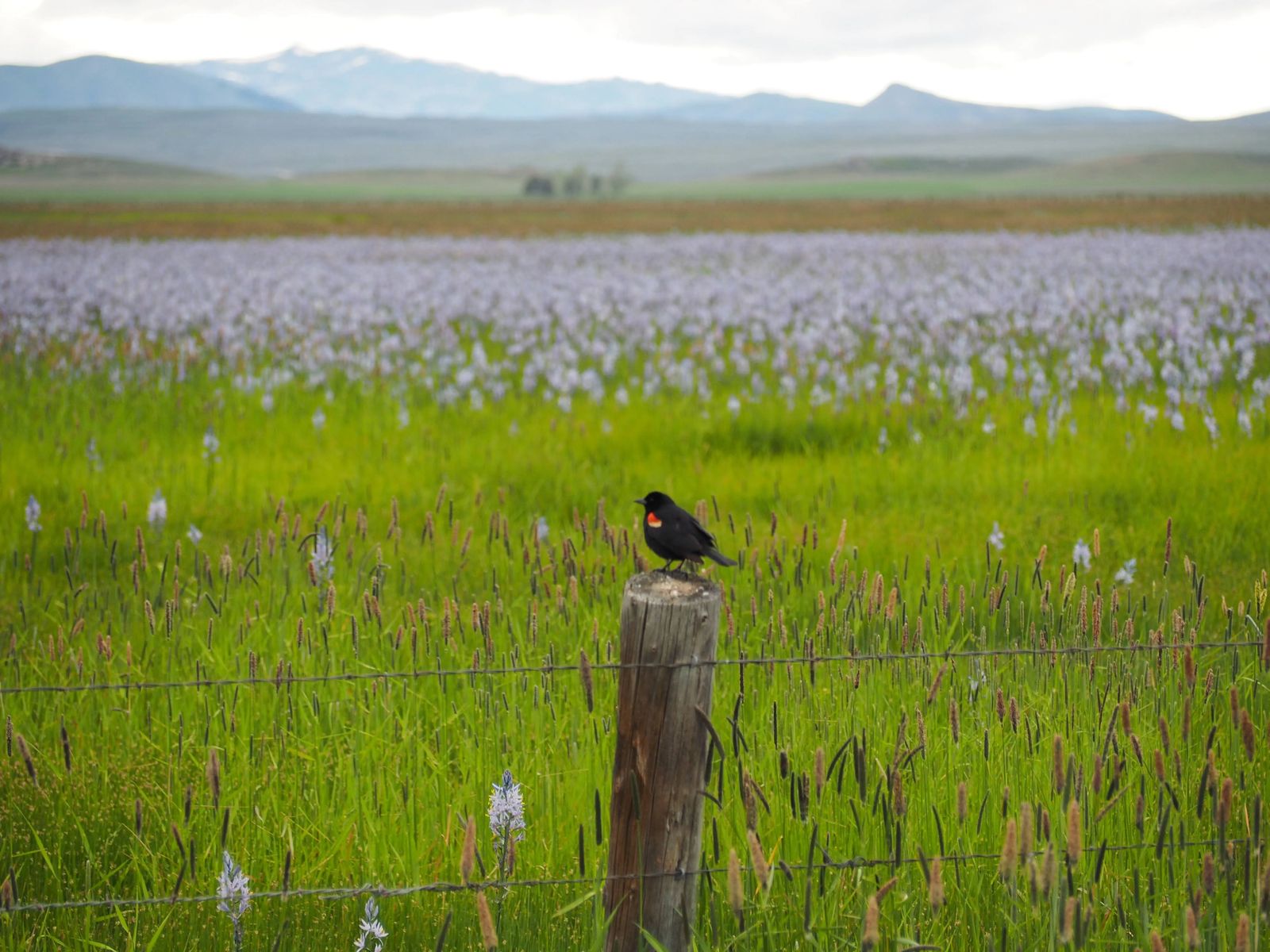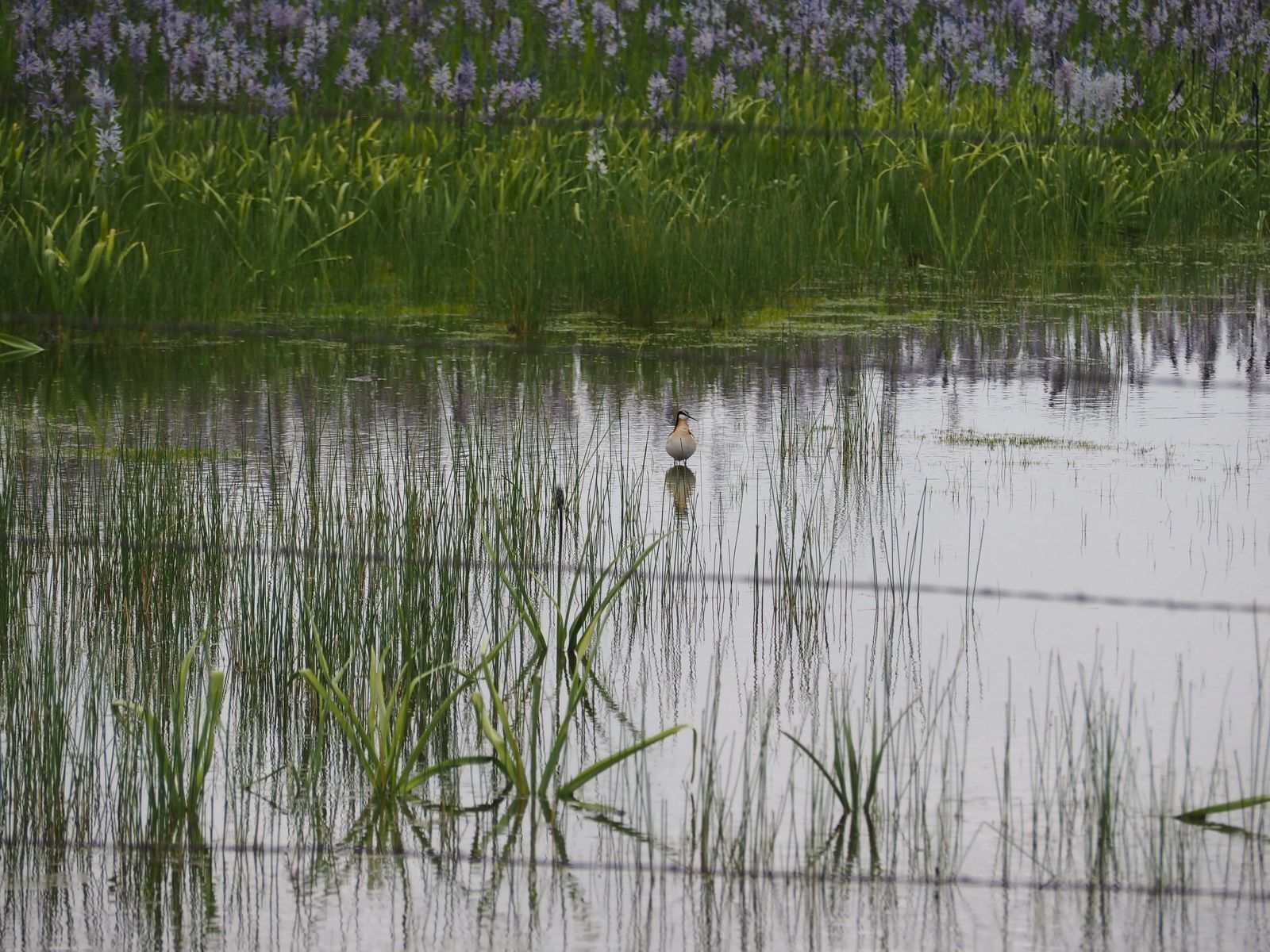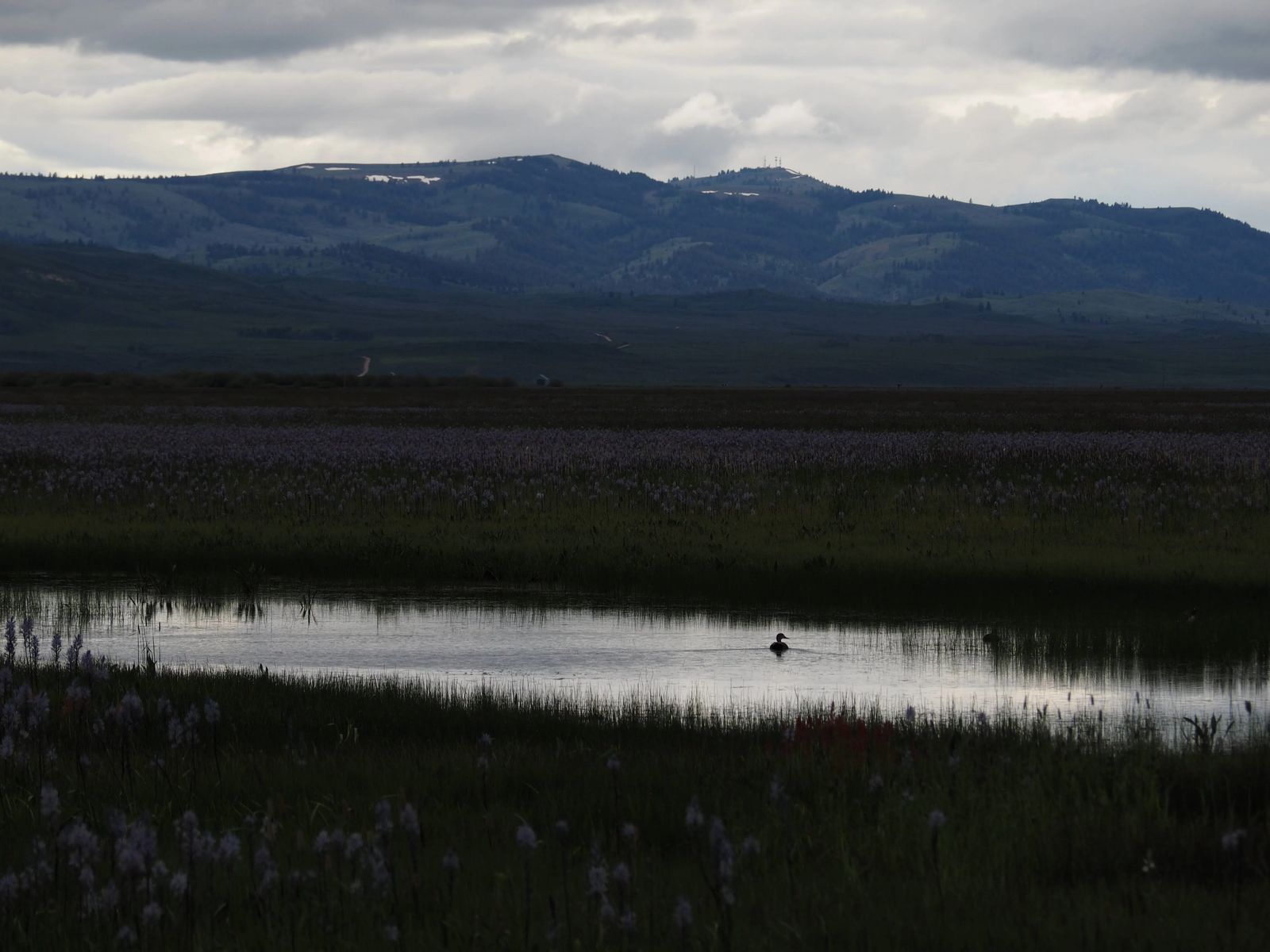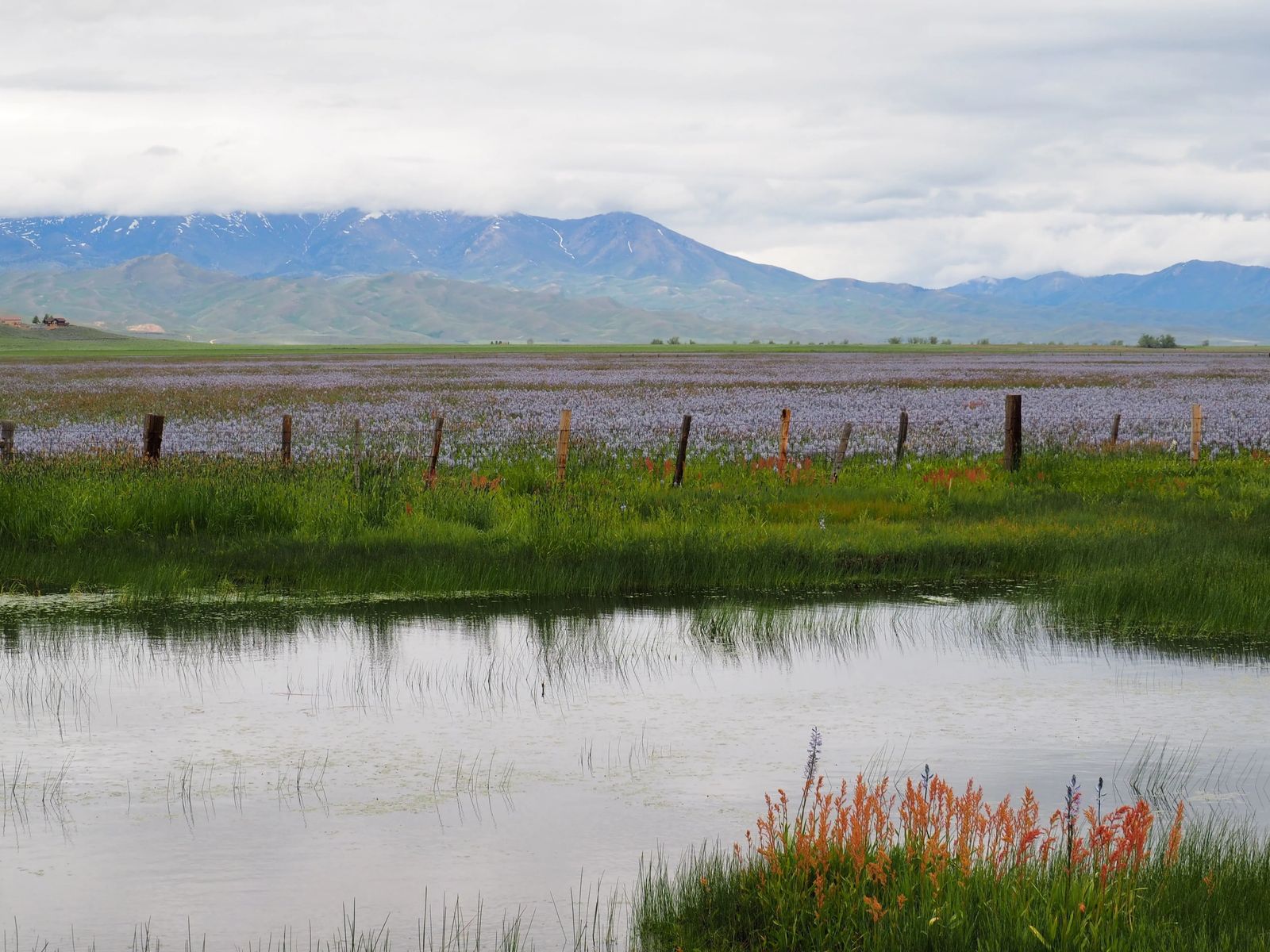
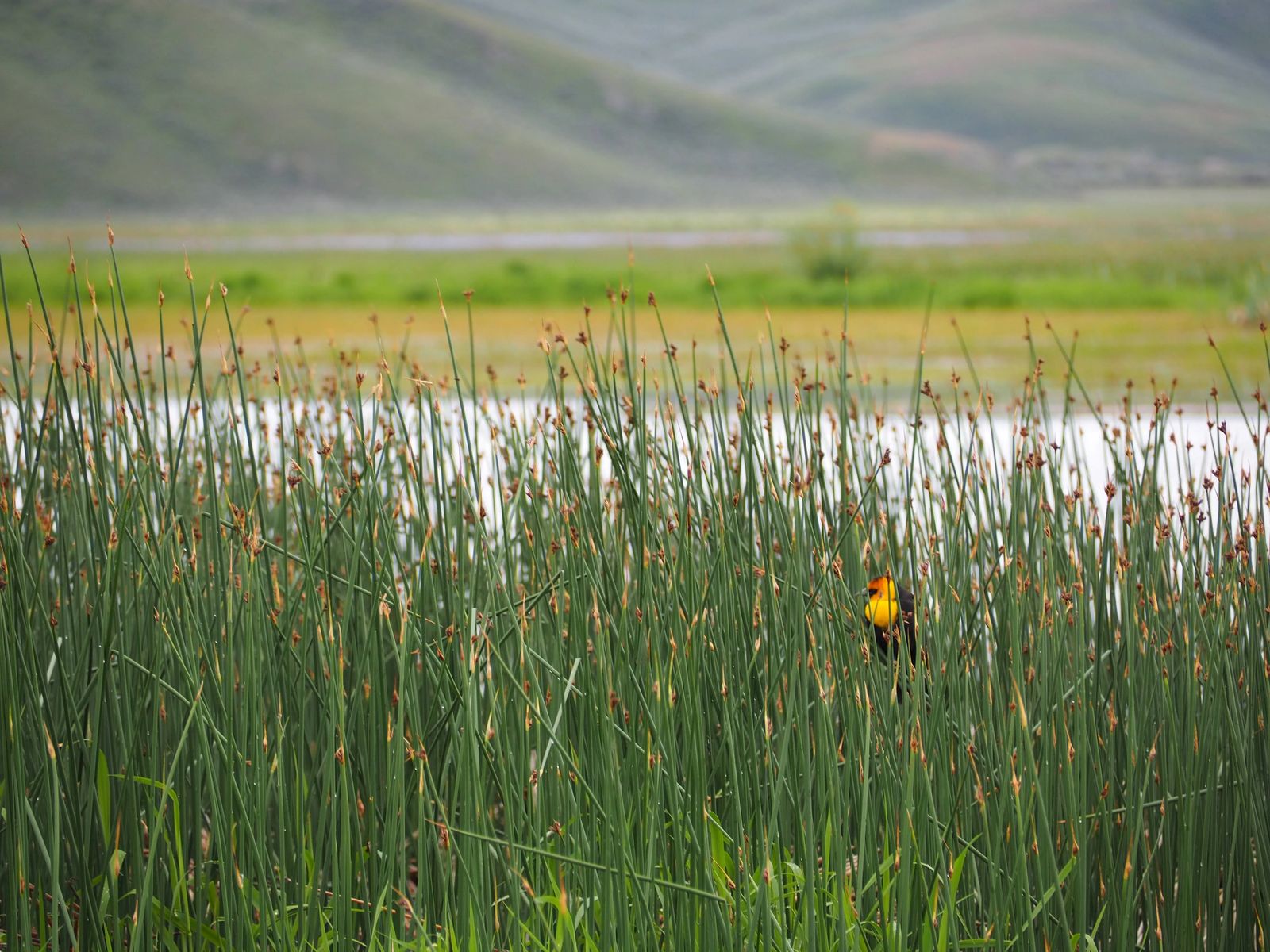
Weekly Gem #272, The south forty
Published 6/11/22
Location: This Hidden Gem is located a short drive south of Hill City, ID (see the Clue Me! Map). The shore birds and waterfowl that pass through refer to it as the “Pool Table,” as in loads of shallow pools in an area as flat as a table. People that pass through know it as the Camas Prairie Centennial Marsh. Up until about 150 years ago, the Bannock, Shoshone, and Northern Paiute tribes called it their summer home.
Let’s start with the Pool Table, which is a pretty accurate description. The marsh lies in a mountain valley, roughly 5061 feet in elevation. The flat part at the bottom of the valley, the floodplain, is about 3 miles across and 26 miles long, and over that stretch is flat as a pool table. The marshy area that remains is a five mile stretch located in the western end of the valley, and it has an elevation change of 5 feet over those five miles. When the snow melts in the Spring, the water just stays, flooding the marsh for 3 to 5 months. This is beautiful habitat for stopover or nesting of waterfowl, wading birds, and other birds that like to hang out by the pools. And though impressive, what remains is shrinking, and far less impressive than even a few decades ago, because people continuously “improve” drainage in the valley to create more easily tillable farmland. More dry farmland inevitably means less wet land for the birds.
One reason this area was the summer home to Native Americans is that they also used it as farmland, but in their case, it was ‘no till’ farmland. The native marsh is home to large swaths of camas lily, which has bulbs that are edible and highly nutritious. The tribes would move up here from the Snake River Plain for the summer, harvesting large camas lily bulbs, replanting smaller bulbs for next year, with hunting parties collecting meat and hides in the surrounding hills. For hundreds of years the tribes were able to harvest enough camas bulb every summer to feed themselves through the winter, while always maintaining the crop to support them in the future.
We aren’t going to get into the details about how swine farmers destroyed their summer home, treaty rights be damned.
Regarding the marsh itself, late May to early June is when the camas lilies bloom, and is an ideal time to visit. We tried to get pictures of the landscape, but birds kept photobombing. You can see the culprits in several photos, including a hawk, some ducks, a pair of phalaropes, red-winged blackbirds, yellow-headed blackbirds … and an eggplant? At the end of the day, they all agreed. Every day is a good day at Camas Prairie Centennial Marsh.
Thanks to Mikyla Carpenter for most of the photos.
.........
Here's the hidden gem entry from our Clue Me! map.
Clue
An old Shoshone farm
Description
The Camas Centennial Marsh
Why It's Interesting
In addition to being a great place for birdwatching, and a seasonally incredible bloom of camas lilies, this area was a source of seasonal harvests by Shoshone who came during the summer to collect camas bulbs. They would come every year for hundreds or thousands of years.
